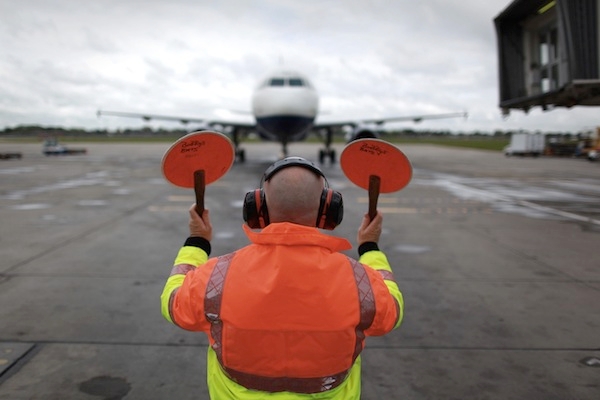A retired civil servant of my acquaintance usually provides a telling perspective on the administrative affairs of the day. We discussed the Heathrow row recently. He said that it was ‘right’ to delay any decision until 2015 so that proper investigations could be made and considered. If he thought that the Tories would not dare break their no-runway manifesto pledge in this parliament, then he did not mention it. For him, it was a question of process and nothing else.
The policy not to have a policy on Heathrow until 2015 certainly exudes a bureaucratic air, compounding the sense that this government has fallen captive to a conservative civil service. But one can also smell the fetid whiff of faction as a demoralised party, which is already showing signs of turning on itself, looks to the future. The Downing Street aide quoted in James Forsyth’s latest Spectator politics column as saying ‘[Justine Greening] will have plenty of time to think about runways as her flight to the next developing country circles the airport yet again’ lends an insight into the malice and acrimony that is likely to characterise the battle.
But, of course, Justine Greening will not be alone above the airport as we wait for the mandarins to conclude their deliberation. The coalition against Heathrow’s expansion is strong; but so too are those in favour of improving airport capacity in the south-east. One imagines that this latter force will strengthen if Britain does not break its current economic malaise, because the case for a ‘silver bullet’ will harden.
There are historical pressures, too. Ted Heath’s government was the last to legislate for a new airport in London; he chose Maplin in Essex as the site, but his decision was reversed by Harold Wilson in 1974. The irony of this is that Ted Heath, when a civil servant, was the driving force at the Ministry of Civil Aviation when it was developing Heathrow (then called London Airport) between 1946 and 1947. An architect of our present aviation policy believed it to be inadequate nearly 40 years ago.
The British public harbours considerable and not unwarranted suspicion of ‘vanity projects’. But the last enormous airport construction which the government undertook serves as a revealing case study. In 1989, the British and Chinese governments came to an agreement that there should be a new airport in Hong Kong (part of substantial infrastructure investment on the island). This would benefit Hong Kong’s economy and coincide with the reversion of its sovereignty to China.
The scheme was very ambitious. The airport was to be built on land reclaimed from the South China Sea (which recalls dreams of Boris Island), and it was among the most expensive capital projects of the time, costing $20bn. But it was necessary. Booming Hong Kong had consumed the old Kai Tak Airport, which was operating at near 100 per cent capacity (just as Heathrow is). The jumbo jets landed among the new houses and tower blocks. I once saw a woman hanging laundry up on her balcony seconds before the plane touched down onto the cramped airfield; it was unnerving for me, but God knows what she made of it. You get a sense of the bizarre experience in this YouTube clip, and even more so here. More capacity was required, and so too was an improvement in the quality of life and housing in downtown Kowloon (just as it is in west London).
The construction of the new airport, though underwritten by memorandums of understanding between Britain and China and further consultations, was dogged by controversy. The posturing associated with the politics of pride (both of the resurgent and wounded varieties) undermined financing. There was also a significant impact on the environment. Civil law cases related to the project are still running: for example, there was recently a dispute over the roof.
The airport opened in 1998 and proceeded to make large losses, with one estimate suggesting that it had cost the island’s economy $600 million in its inaugural year. But, the airport is now the third busiest in the world and Hong Kong continues to be among the greatest centres of international commerce. Further expansion is underway with the construction of a third runway.
No plan survives its execution, no matter how carefully composed. There are pitfalls aplenty. But that is not a reason to dither: the civil legal system exists to resolve disputes between parties. The dividends of being bold are plain to see, albeit on the other side of the world.






Comments